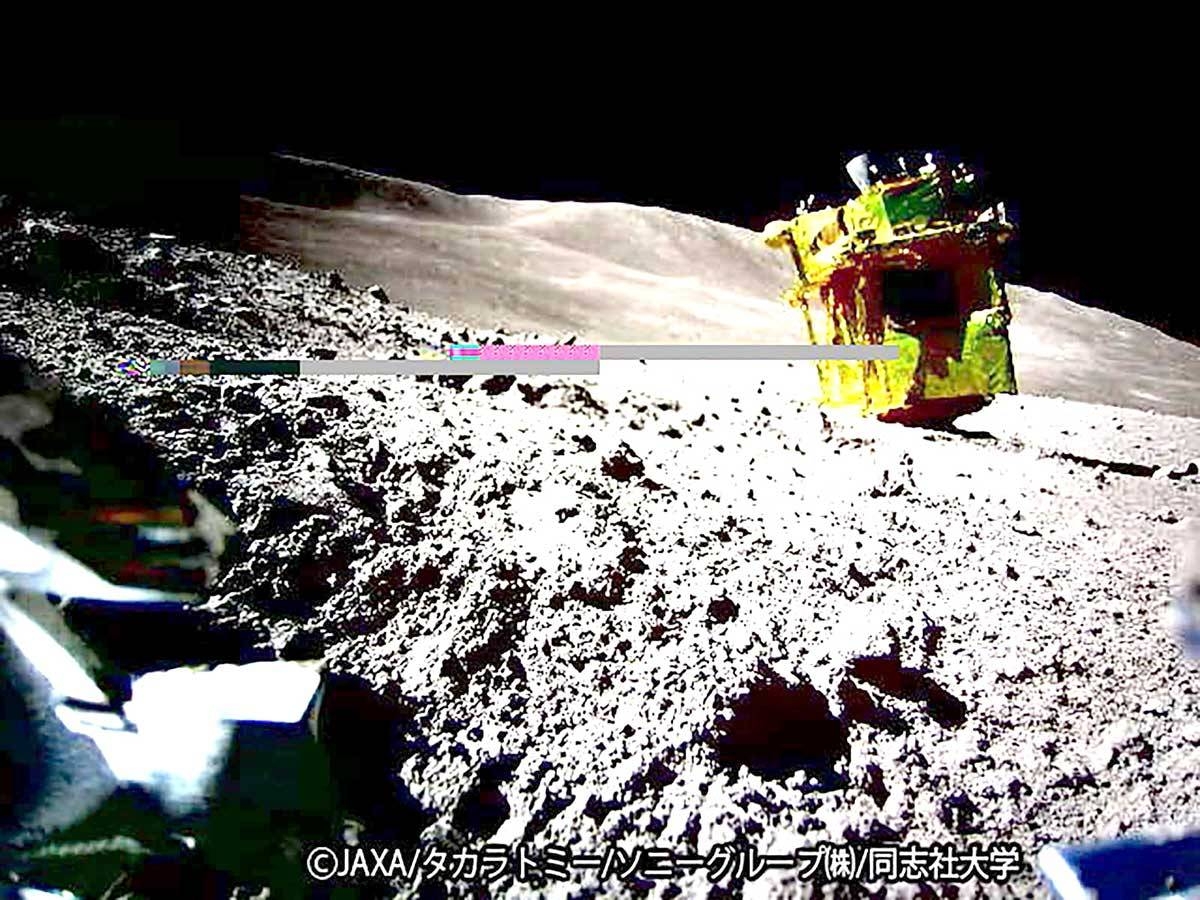Japan’s space agency, JAXA, announced on Thursday that its lunar craft, nicknamed the “Moon Sniper,” successfully made a pin-point landing on the moon, despite encountering last-minute engine problems. The agency also released the first images captured by the craft, showcasing the intact yellow lander sitting at a slight angle on the rocky gray surface, with lunar slopes visible in the distance.
This achievement places Japan as the fifth nation to accomplish a soft lunar landing, following the United States, the Soviet Union, China, and India. The unmanned Smart Lander for Investigating Moon (SLIM), equipped with precision technology, aimed to touch down within 100 meters of a specific landing spot on a crater. This level of precision surpasses the usual landing zone range, which experts typically estimate to be several kilometers.
JAXA confirmed that SLIM successfully achieved a pin-point soft landing, with the actual landing point being just 55 meters away from the target point. However, the craft encountered engine problems during its descent, potentially causing it to deviate from its intended course. Shinichiro Sakai, SLIM’s project manager, explained that the craft had initially been on track to land even closer to its target. Additionally, the lightweight spacecraft’s solar batteries experienced issues, resulting in a lack of power generation.
Despite these challenges, JAXA was able to download technical and image data from SLIM’s descent and the lunar surface before deciding to power down the craft. The mission aimed to explore a crater where the Moon’s mantle, the usually deep inner layer beneath its crust, is believed to be exposed on the surface. By analyzing the rocks in this area, JAXA hopes to gain insights into the Moon’s potential water resources, which are crucial for future plans of establishing bases and using the Moon as a stopover on the way to Mars.
During the landing, two probes successfully detached from SLIM. One probe is equipped with a transmitter, while the other is designed to traverse the lunar surface, transmitting images back to Earth. The shape-shifting mini-rover, slightly larger than a tennis ball, was co-developed by the company responsible for the popular Transformer toys.
It is worth noting that technical problems are not uncommon in lunar missions, and the United States has recently faced setbacks in its ambitious Moon programs. Japan has also experienced challenges in its previous lunar missions, both public and private. In 2022, the country’s lunar probe, Omotenashi, failed to successfully complete its mission as part of the United States’ Artemis 1 mission. Similarly, a Japanese startup called ispace encountered communication issues with its craft after what it described as a “hard landing” during its attempt to become the first private company to land on the Moon in April.
Despite these setbacks, the successful landing of Japan’s “Moon Sniper” craft marks a significant achievement in lunar exploration. As space agencies and private firms continue to embark on missions to the Moon, overcoming technical challenges and gathering valuable data will pave the way for future advancements and potentially unlock the Moon’s mysteries.







